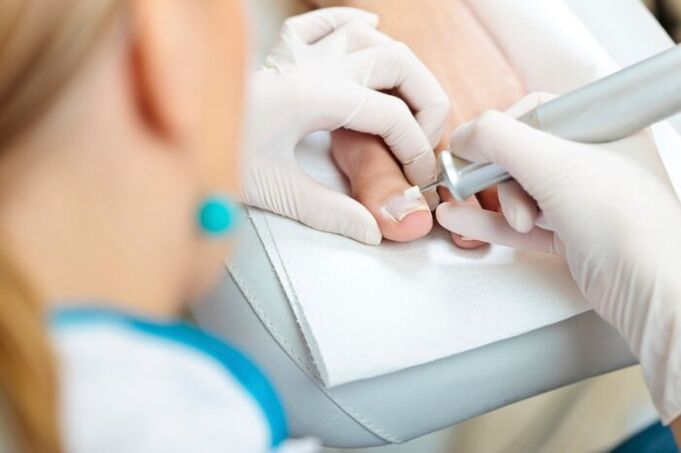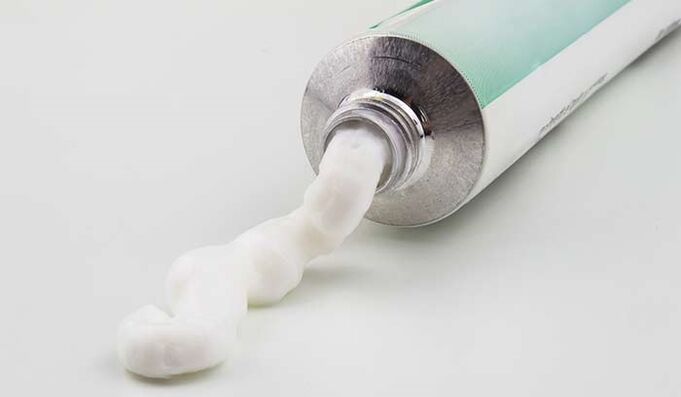How to get rid of toenail fungus. Which antifungal medications are most effective? Medicines for external and oral use. Let’s examine everything in more detail.
Toenail and toenail fungus is a common and incurable infectious disease caused by pathogenic fungal spores. Most often, the skin of the feet and the nail plates of the toes and hands are infected. The most effective treatment is in the early stages of the disease, when the area and depth of infection is small.
When the first signs of damage are detected (itching, redness of the skin, thickening and peeling of the nails), it is necessary to immediately begin treatment of the disease. Modern medicine offers a wide range of effective medicines designed to combat various types of nail fungus - antifungal varnishes, solutions, sprays, effective oils, and oral agents.

Antifungal drugs are selected by a specialist.
The most effective drug for nail fungus
The pharmaceutical industry offers consumers a wide variety of effective antifungal agents. But in each individual case, the advice of a doctor is necessary, as only a specialist can accurately determine the type and degree of spread of the fungal infection.
In addition, antifungal agents (for both topical and internal use) are powerful antibiotics and have a number of side effects and contraindications. Self-medication, misdiagnosis can worsen the course of the disease, lead to the development of resistance of various forms of fungi to drugs and an even greater progression of the infection.
Modern remedies for the treatment of nail fungus have a fungicidal and fungistatic effect, that is, they not only completely destroy the fungus, but also stop the further development and growth of fungal cells, thus ensuring a positive long-term treatment effect.
Often, feet and nails are affected by fungal infections, which include several different types of fungi and bacteria. In this case, a good treatment effect can be achieved by alternating external antifungal agents in combination with oral medication.
Highly effective agents have a broad-spectrum antifungal effect, which makes it possible to use them for the treatment of nail fungus caused by different types of fungal infection.
Varnishes against nail fungus
If you start treating mycosis in time, when nail damage is not very common, you can achieve a positive effect with local treatment tools - antifungal varnishes and solutions against nail fungus.
Antifungal varnishes have a very effective antifungal effect, they penetrate well into the nail structure, the effect within the affected tissues continues even 7-10 days after application. Concentration on the body is negligible after prolonged use. Effective for nail damage no more than 2/3.
Antifungal drugs for external use

If the fungus has infected not only the nails, but also the skin of the feet or hands, it is recommended to apply day creams and ointments on the affected areas, among which the most popular and effective are:
Creams or gels with the active ingredient terbinafine hydrochloride are effective. Drugs have a fungicidal and fungistatic active effect on a number of fungi: mold, dimorphic, dermatophytes, yeast. The gels are absorbed faster and penetrate better into the skin.
Oral antifungal drugs
The advanced stages of mycosis are difficult to treat and the use of external medications alone is not enough. In such cases, it is necessary to use oral medications, which very effectively affect the course of the disease, infect the fungus from within and prevent further development of the disease. A special positive result can be achieved by applying complex treatment in the form of tablets and oils.
In most cases, nail fungus pills can have a toxic effect on the human body, affecting the internal organs that contain fat - the liver and kidneys. But at the same time, these drugs have a powerful therapeutic effect, effectively destroying various types of fungi, contributing to a complete cure. Therefore, all oral medications should be taken strictly as instructed by a specialist physician (mycologist), taking into account possible side effects.
Antifungal drugs should be taken very carefully, strictly adhering to the dose prescribed by the doctor and the duration of the course of treatment. If side effects occur, treatment should be discontinued immediately and a physician should be consulted. Patients with various impairments of renal and hepatic function should be handled very carefully.
The need to treat mycosis and prevent it
Fungal spores are very persistent, the affected areas are difficult to treat, the course can last from 2 to 4 months. Treatment should not be interrupted, as even a small focus, under favorable conditions, creates the development of a new infection. Even after complete recovery, it is necessary to follow the rules of hygiene, avoid contact with other people's shoes.
For prevention purposes, it is recommended to treat feet and shoes with antifungal sprays or other effective means, especially after visiting public places: swimming pools, saunas, beaches, showers in sports facilities.
Only comprehensive treatment in combination with preventative measures will help defeat the fungus forever.
























